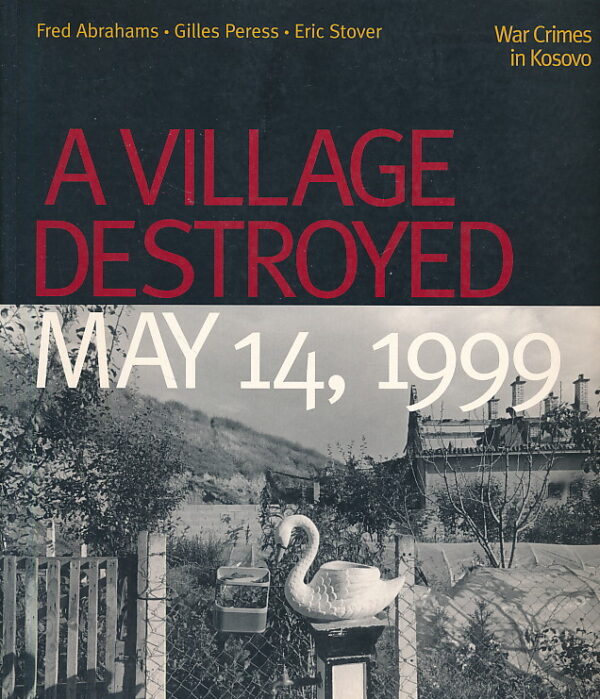A Village Destroyed May 14, 1999
Izvorna cijena bila je: €20,00.€14,00Trenutna cijena je: €14,00.
Na zalihi
| Težina | 653 g |
|---|---|
| Format | 23 × 25 cm |
| Autor | |
| Izdavač | |
| Godina | 2002 |
| Broj stranica | 247 |
| Uvez | Meki |
| Stanje knjige | Vrlo dobro |
A Village Destroyed, May 14, 1999: War Crimes in Kosovo 0th Edition by Fred Abrahams (Author), Eric Stover (Author), Fred Abraham (Author), Carroll Bogert (Introduction) On a warm spring morning in 1999, in the midst of NATO’s air campaign against Yugoslavia, Serbian security and paramilitary forces descended on the small village of Cuska, near the western Kosovo city of Pec. Soldiers with painted faces and masks rounded up the population and forced them to assemble in the center of the village. The women, children, and elderly were separated from any men who had not managed to flee. The villagers were threatened and robbed of their money, jewelry, and identification papers. Twenty-nine men were divided into three groups and taken into three separate houses, where they were sprayed repeatedly with automatic weapons. Each house was then set on fire and left to burn. This gripping investigative account of the massacre establishes the truth of what happened in Cuska, deepens our understanding of war crimes, and sheds light on the world of paramilitaries who carry out mass killings of civilians in the name of the state. The events in Cuska are emblematic of the destruction of hundreds of other villages throughout Kosovo. But in this case there was a difference: in each of the three groups of men there was one survivor who managed to crawl from each of the burning houses. They, and many others present that day, told their stories to Human Rights Watch, a research and advocacy organization that monitors abuses in more than seventy countries around the world. Fred Abrahams scanned into his laptop photographs of Serbian security forces apparently left behind when they withdrew from Kosovo, and showed them to victims, who identified the perpetrators. With an essay by Eric Stover and a collection of arresting photographs by Gilles Peress of the exile and return of Kosovar Albanians to their homes and villages, this book presents a riveting, multifaceted story of unmatched depth and complexity. A final section of self–portraits taken by Serbian troops and paramilitaries holds the key to understanding how Serb forces were able to overrun so much territory in so little time.
